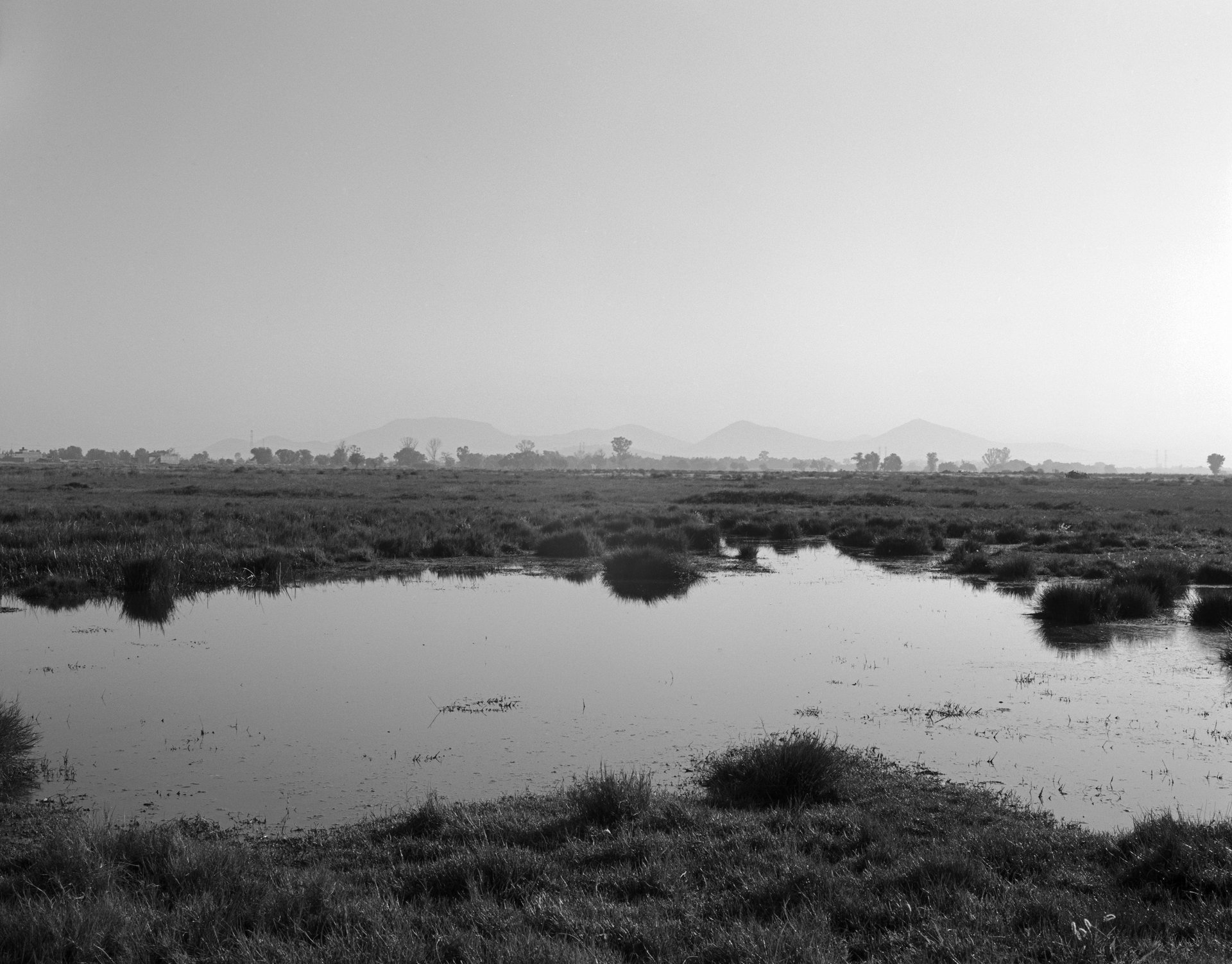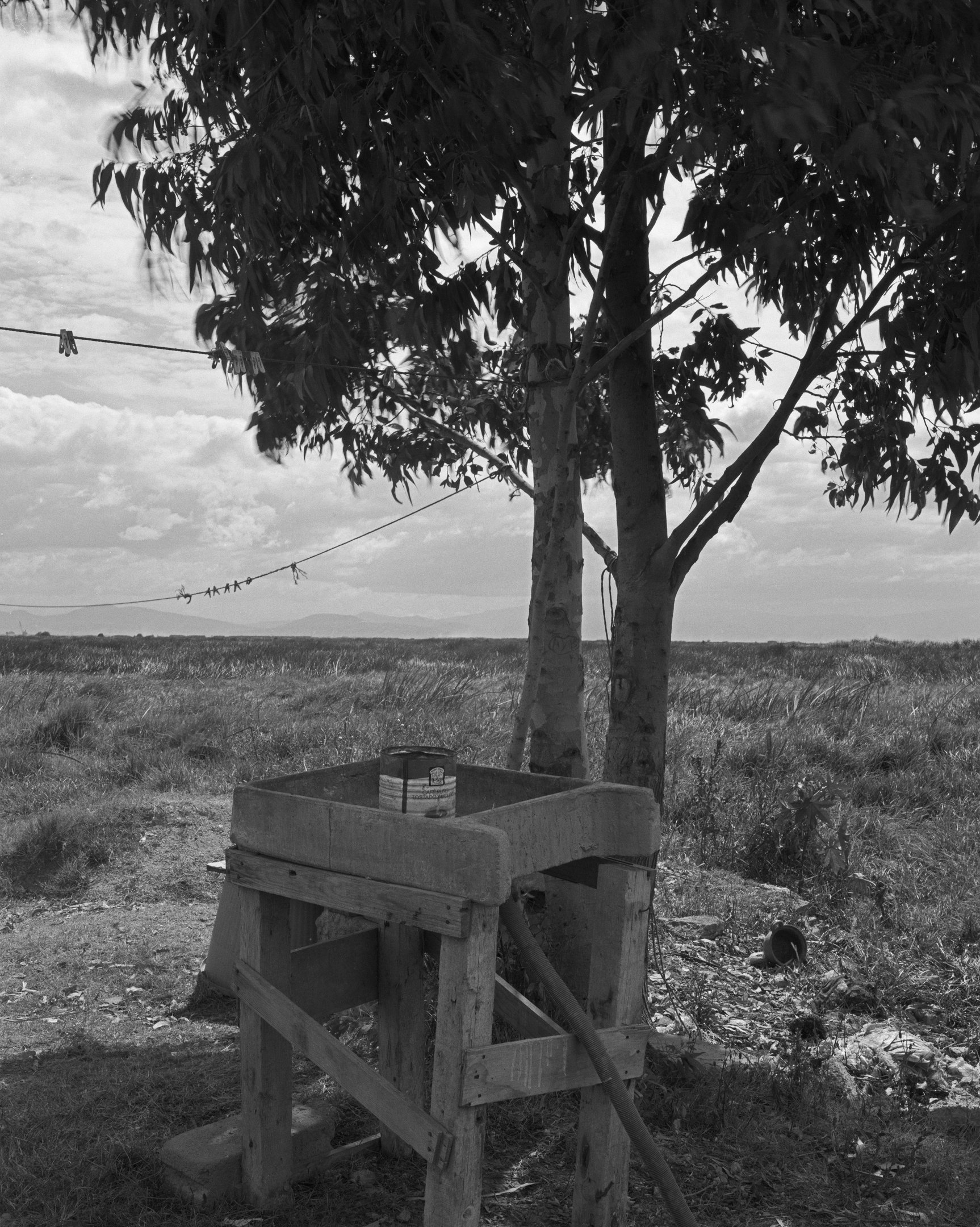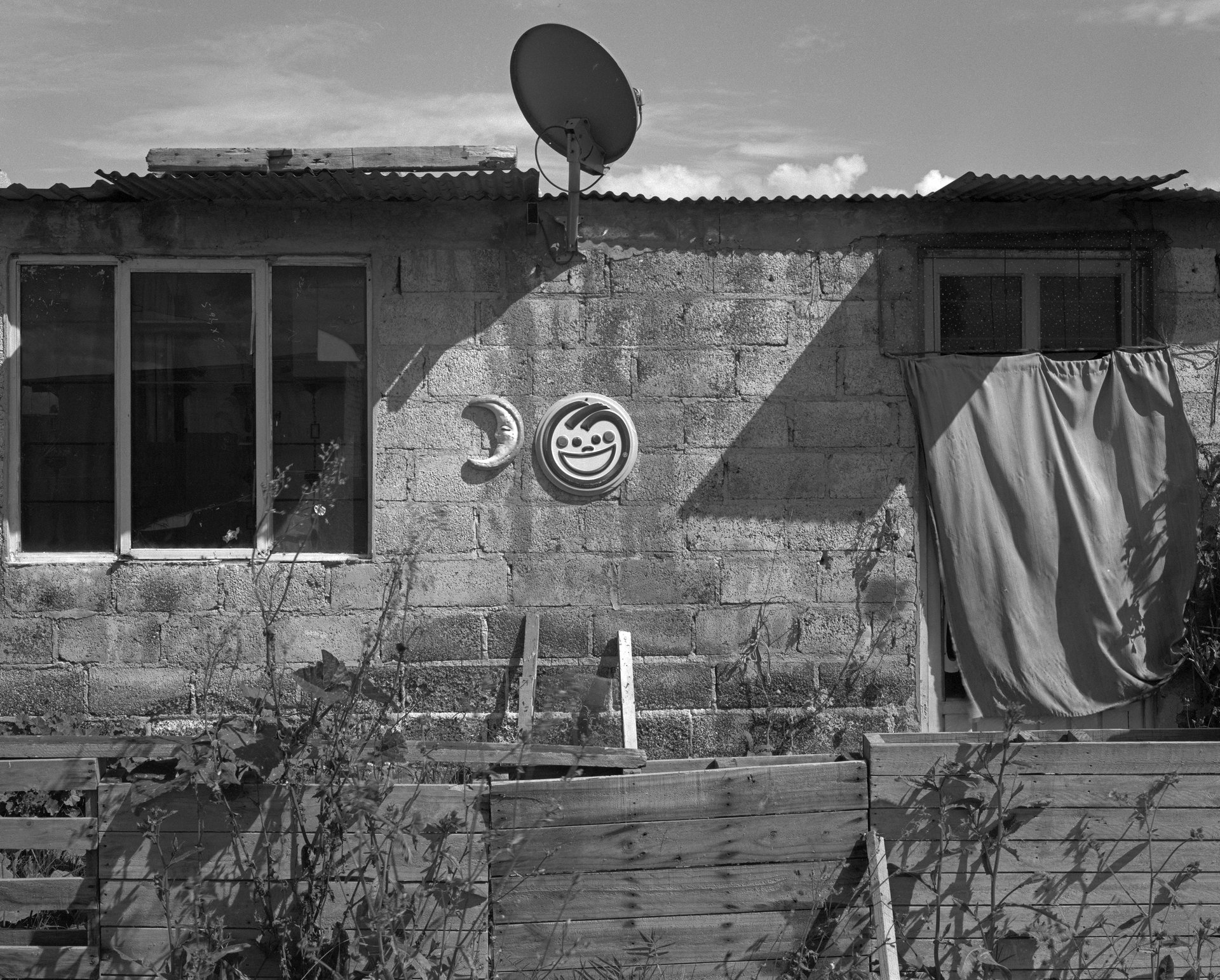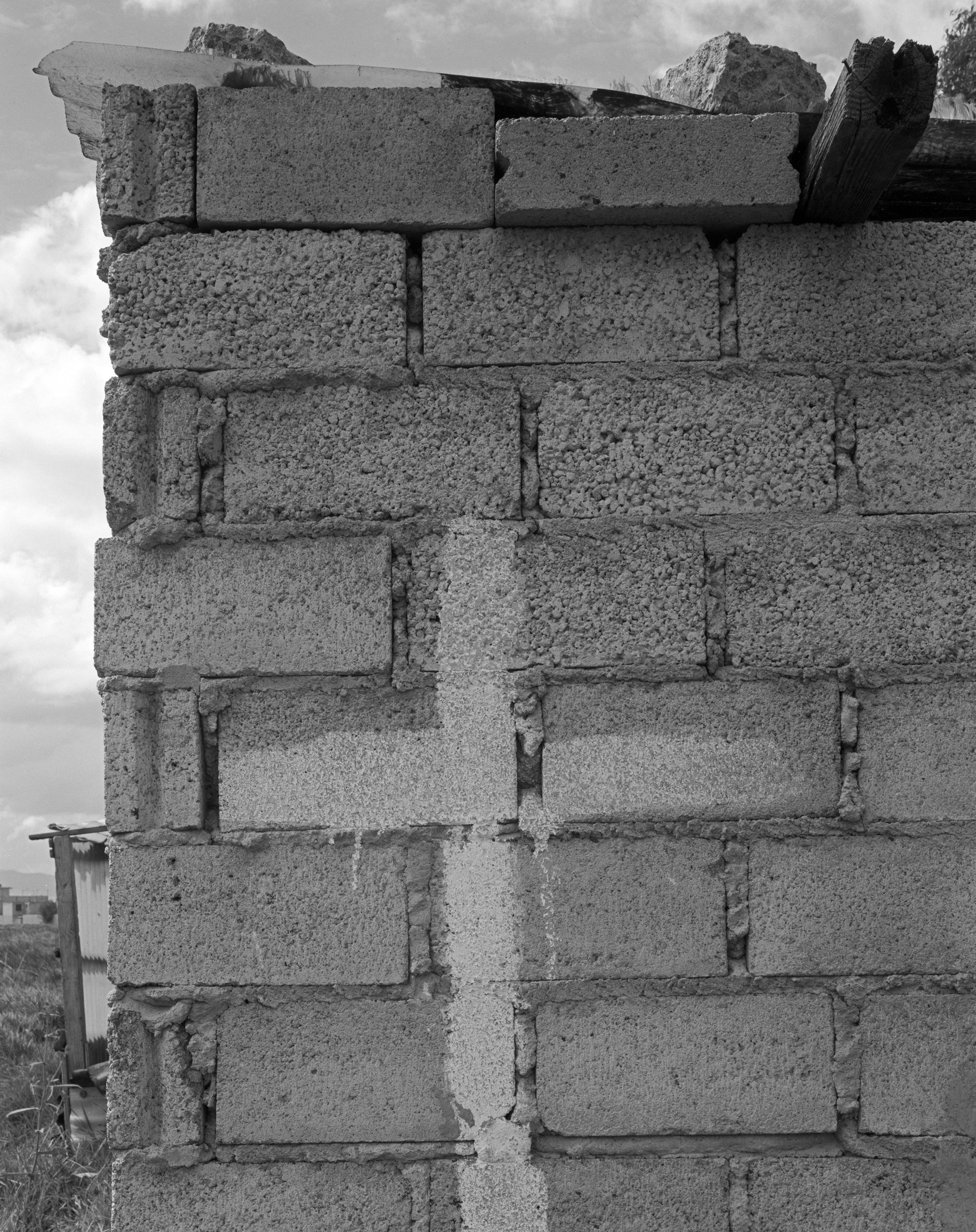




El Reflejo Materializado de Cacamatzin
Eleven 8x10 gelatin silver hand prints.
Texcoco 2014.
Paved lake
The city, before existing as a physical space, exists as a desire. City models are first born as ideas which are imagined, over time urban reality becomes a reflection of such imaginary, or on the contrary, a confrontation; something which distances itself not recognising footsteps nor desires. Mexico City represents in an exemplary way such opposition between the nostalgia of the past, existing reality, and the possibilities of a future. It is a city constructed in layers: The great Tenochtitlán, funded by the indigenous mexicans on a lake; the colonial capital of the New Spain built on top of the aztec temples; the baroque city built over the nouveau-spanish palaces; independent Mexico of the XIX century built over the neoclassical legacy; the modern city of the XX century erected exnovo as if painted on a blank canvas, and the urban chaos of the XXI century extending over rivers and forests. In less than fifty years Mexico City went from having two million inhabitants to nearly twenty million. A territory in which lakes have been left to dry and ninety percent of rain water is wasted to the gutter rather than being productively used. A city that lost its original equilibrium since the conquest by spaniards bypassing its geographical and cultural reality. The zone that best represents such situation is the old Texcoco lake, remaining an almost intact place in the middle of the city. It represents its origin, a collective memory, but also a potential better future. It is the place capable of restoring contact with its natural condition. Two proposals of great impact were laid out around the time these photographs were taken: A return to the lake city, consisting on a carefully studied system proposing to rescue the lake ( three times the size of Acapulco bay), or building the largest international airport in America. This space represents the last urban void offering the possibility to re-invent the city, to make it a dream or a nightmare.
Fernanda Canales. Mexico City 2017.
*Cacamatzin, was the Tatloani ( king) of Texcoco. He was also a poet.